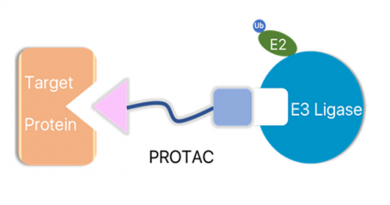Normal levels of "Goldilocks" protein in mouse model restores neurologic function in MECP2 duplication syndrome
By Ruth SoRelle, M.P.H.

For 15 years and more, Dr. Huda Zoghbi, professor of molecular and human genetics at Baylor College of Medicine, and director of the Jan and Dan Duncan Neurological Research Institute at Texas Children’s Hospital, and her team have worked with the “Goldilocks” protein, MeCP2. Too little of the protein results in Rett syndrome that, mostly in girls, is characterized by decreased cognition, inability to perform motor functions, particularly with the hands, and autism-like behavior. Too much, and boys have MeCP2 duplication disorder, a progressive neurological disorder in boys.
Such gene duplications are a common cause of intellectual disabilities and autism as well as various other neurological disorders. In this new study, Zoghbi and her colleagues describe a potential way to treat such disorders.
Cellular maestro
MeCP2 (methyl-CpG-binding protein) is a cellular maestro that modulates the expression of thousands of other genes in the brain, but its levels must be carefully controlled. Too little of the protein results in Rett syndrome, a childhood neurological disorder characterized by decreased cognition, inability to perform motor functions, particularly with hands, and autism-like behavior.
More than 10 years ago, Zoghbi who is also a Howard Hughes Medical Institute investigator, discovered the “Goldilocks” nature of the MeCP2 protein. The mouse models Zoghbi’s lab generated with an extra copy of the MeCP2 gene developed a progressive neurological disorder. She suspected there must be children or adults with analogous neurological problems due to duplication of the MECP2 gene and this proved to be the case. Boys with the MECP2 duplication syndrome suffer from poor muscle tone and motor function, cognitive disability, epilepsy, autistic behaviors, respiratory infections, and premature death. Once considered rare, it appears that the disorder is more common than previously thought, said Dr. Yehezkel Sztainberg, a post- doctoral fellow in Zoghbi’s laboratory and first author of the report.
Reverse effects
Now, using both state-of-the-art genetic techniques and a small molecule that can target specific genetic material (in this case the extra MECP2 gene),Zoghbi, Sztainberg and their colleagues have shown that it is possible to reverse the terrible effects of the duplicated gene.
In a series of experiments, they showed that mice engineered to have an extra copy of MECP2 develop all the symptoms of the human disorder. When such mice became fully-symptomatic, deleting the extra MECP2 gene normalized the levels of MeCP2 and reversed many of the phenotypes, providing the proof of principle that the disorder is reversible in adult animals,” Sztainberg explained.
However, while deleting the gene proved the concept that the neurological dysfunction in the mice can be reversed, it is not a feasible treatment for human patients. To develop a translational tool, Zoghbi and her colleagues turned to antisense oligonucleotides (or ASOs for short). They found that normalizing the levels of MeCP2 with antisense oligonucleotides largely reversed the behavioral, molecular, and other deficits that plagued the mice. After they treated young adult mice, they used the antisense oligonucleotides in older mice who, by that time, were having many seizures. With treatment, the seizures stopped, said Zoghbi. “That was very encouraging,” she said. It meant that the brains of the mice were not permanently damaged and could recover.
Tested in other diseases as well
Antisense oligonucleotides are being tested in individuals with spinal muscular atrophy, a devastating genetic disorder, providing hope that this approach can be used in human MECP2 duplications in the future.
“Now it’s translational,” said Sztainberg. The antisense treatment was developed in collaboration with Isis Pharmaceuticals and targets the human copy of the gene. Zoghbi hastened to add: “More work must be done in the animal model before we consider clinical trials. The additional experiments are to determine how to titrate and monitor the dose of ASOs to safely normalize MeCP2 levels without lowering them below the normal range to avoid causing Rett-like symptoms.”
Potential in other disorders as well
The antisense approach has potential for treating other disorders in which there is duplication of genetic material by targeting genes in the critical regions, said Sztainberg. Among these are autism and intellectual disabilities, Charcot-Marie-Tooth disease, Potocki-Lupski syndrome, as well as Down syndrome, the most common of these disorders, Sztainbergsaid. Treating Down syndrome, in which an entire chromosome is duplicated, would require determining the critical gene(s).
“Down syndrome is the prototypical gene dosage disorder,” said Zoghbi. While the disorder results from a duplication of an entire chromosome, using antisense oligonucleotides to knock down some of the critical genes that affect learning and memory as well as dementia could prove important.
Zoghbi is also a professor of pediatrics and neuroscience. Others who took part in this work include Hong-mei Chen, John W. Swann, Shuang Hao, Bin Tang, Zhenyu Wu, Jianrong Tang, Ying-Wooi Wan, and Zhandong Liu all of Baylor and the Neurological Research Institute, and Frank Rigo of Isis Pharmaceuticals in Carlsbad, California.
Funding for this work came from National Institutes of Health (Grant 5RO1NS057819 and 5P30HD024064), the Rett Syndrome Research Trust (401 Project), the Carl. C. Anderson Sr. and Marie Jo Anderson Charitable Foundation, the Howard Hughes Medical Institute, the National Science Foundation (Grant DMS-1263932) and the Baylor Intellectual and Developmental Disabilities Research Center (Grant 1U54HD083092).



